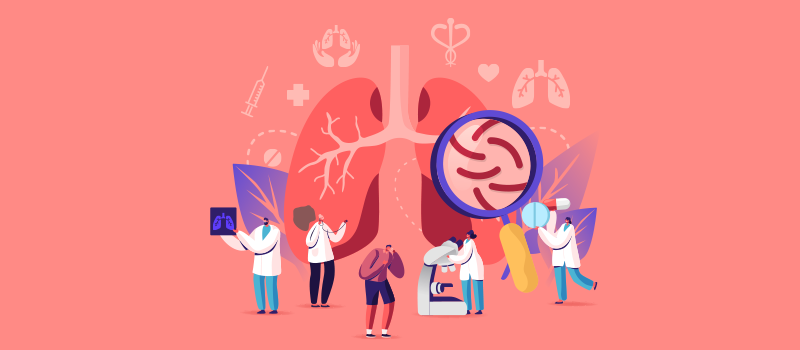What’s the Buzz
The Bee Healthy Blog
What Are The 4 Stages of Pneumonia?

Pneumonia is a severe lower respiratory tract infection that affects the air sacs in one or both lungs. It is a common and potentially fatal infectious disease and a leading cause of death in the United States. Indeed, pneumonia is the only infectious disease that is among the top 10 causes of death in the US.
Please continue reading to understand what causes pneumonia and how the condition progresses through various stages. Learning about the four stages of pneumonia will help you understand what signs to look out for and when to seek care from a qualified healthcare provider.
What causes pneumonia?
Several microorganisms, including bacteria, fungi, and viruses, can cause pneumonia. Typical bacterial pneumonia is caused by Streptococcus pneumoniae (called pneumococcal pneumonia). Other bacterial infections that can cause pneumonia include Staphylococcus aureus, Haemophilus influenzae, Klebsiella pneumoniae, and Moraxella catarrhalis. Common causes of viral pneumonia infection are influenza, respiratory syncytial virus (RSV), and SARS-CoV-2 (the virus that causes COVID-19 disease). Causes of fungal pneumonia include Pneumocystis, Cryptococcus, and Aspergillus.
What are the symptoms of pneumonia?
Regardless of microbiological etiology (cause), the common symptoms of pneumonia include cough, fever, chills, chest pain, and difficulty breathing.
You should know that pneumonia can range in disease severity from mild to life-threatening. Children younger than 2 years old, older adults over the age of 65, and people with other health problems or weakened immune systems are at increased risk of contracting pneumonia, suffering from severe pneumonia, and developing serious complications. In these vulnerable groups, pneumonia can quickly become life-threatening.
How do you know if pneumonia is getting worse?
If you think you have pneumonia, please do not wait for the symptoms to get worse before you seek medical care. You should see your doctor right away if you have pleuritic chest pain (sharp pain when inhaling or exhaling), trouble breathing, a bluish tinge to your lips or fingertips, a high fever, or a severe cough that is getting worse. Your doctor may need to do blood tests, blood cultures, and chest radiography to determine the proper treatment. You may need oxygen therapy and antibiotic treatment, including intravenous antibiotics if it is a bacterial infection.
What are the different types of pneumonia?
Pneumonia is classified in two ways - according to the part of the lungs affected and how you contracted pneumonia.
Bronchial Pneumonia
Also called bronchopneumonia, it affects the bronchi (air passages) in both lungs. It is usually caused by a bacterial infection, but viruses and fungi can also cause bronchial pneumonia.
Lobar Pneumonia
This type of pneumonia affects one or more lobes (sections) of the lungs, causing localized inflammation.
Community-Acquired Pneumonia
This is a viral, fungal, or bacterial pneumonia where the infection is picked up in the community. Community-acquired pneumonia is the most common type of pneumonia.
Nosocomial Pneumonia or Hospital-Acquired Pneumonia
This is an infection that occurs during a hospital stay (more than 48 hours after admission).
Ventilator-Associated Pneumonia
This is an infection that can develop in people who are on a ventilator for more than 48 hours (ventilators are machines that help you breathe).
Healthcare-Associated Pneumonia
This is pneumonia that occurs in non-hospitalized patients who have had extensive contact with the healthcare system in the past 3 months.
Which type of pneumonia is the most serious?
Hospital-acquired pneumonia or healthcare-associated pneumonia can be dangerous because it occurs in people who are already sick. Also, bacterial pneumonia acquired in a hospital or healthcare setting can develop into severe pneumonia. This is because many bacteria that cause pneumonia have developed antibiotic resistance.
Is there a stage 4 pneumonia?
There are 4 stages of pneumonia in patients with untreated lobar pneumonia:
Stage 1: Congestion
This is the first among the four stages of pneumonia. It occurs in the first 24 hours of the infection. The lungs fill with infectious fluid, leading to symptoms like cough, heaviness in the chest, rapid breathing, fatigue, and loss of appetite.
Stage 2: Red Hepatization
This phase occurs after 48-72 hours and lasts for 2-4 days. Immune cells, white blood cells, and red blood cells enter the lung tissue to try and fight off the infection. As a result of this inflammatory response, you may experience increasing productive cough, shortness of breath, extreme fatigue, muscle aches, fever, and chills.
Stage 3: Gray Hepatization
This stage occurs on days 4-6 and lasts for 4-8 days. The red blood cells disintegrate, leaving the lungs looking gray. Symptoms usually persist during this stage.
Stage 4: Resolution
On days 8-10, your body starts to get rid of the infection, and you start to feel better. The major clinical signs and symptoms resolve, but you may continue having a productive cough. This is the body’s attempt to clear the air sacs in the lungs. In most people, the lungs return to normal airways and function. However, if some swelling, lung abscess, scar tissue, or pleural adhesions remain, it can lead to chronic lung disease.
What are the symptoms of dying from pneumonia?
Most people with long-term lung conditions get worse gradually over a period of years. You can tell a person is entering the last stage of their life due to lung disease if they are increasingly short of breath or their breathing is noticeably worse. Also, after each episode or flare of their condition, they do not recover lung function as quickly or do not get back to the level they were at before. Towards the end of life, even minor exertion, such as turning in bed, talking, or eating, can leave a person out of breath.
The Takeaway
After reading about the 4 stages of pneumonia, you now have a better understanding of what’s going on in your lungs when you have pneumonia. The most important thing to remember is that pneumonia can be life-threatening if left untreated, especially in vulnerable groups. It is vital that you seek medical attention without delay if you have fever, a severe cough that won't go away, trouble breathing, and chest pain. Also, be sure to call your doctor if you suddenly start to feel worse after a cold or flu.
References:





SOCIAL